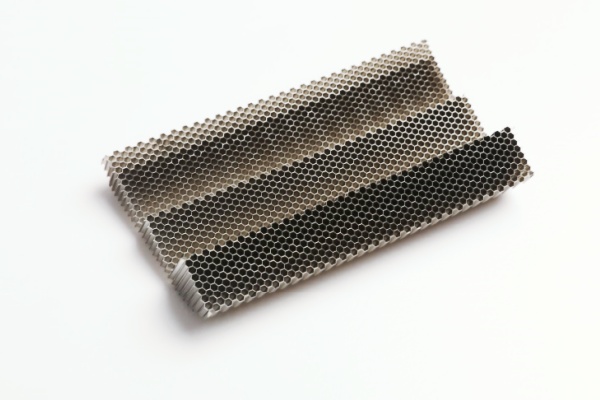To be a valuable global supplier
for metallic honeycombs and turbine parts
Release time:2025-10-15
When we talk about the long-term reliability of a Catalytic Converter, heat is usually the first thing that comes to mind. Every time the engine starts, the converter faces a sudden rise from ambient temperature to several hundred degrees Celsius in just a few seconds. Over time, that thermal shock and constant cycling can do real damage — not only to the catalyst coating but also to the structure that holds it all together.

A modern Catalytic Converter is built around a honeycomb substrate. This structure isn’t just about providing more surface area; it’s also the key to managing thermal stress. The thin walls and uniform cell geometry help the substrate expand and contract evenly. When the material heats up, the honeycomb channels distribute the stress across a larger area, preventing cracks and separation between the coating and the metal base.
Now, the choice of material makes a huge difference. Metal substrates — often based on Fe-Cr-Al alloys — handle heat much better than ceramic ones in heavy-duty or high-performance engines. They can take repeated thermal cycles without warping or fracturing. The metal’s natural elasticity gives it an advantage in dealing with temperature swings and vibration. That’s one reason why more high-temperature Catalytic Converters use a metallic honeycomb design today.
But even the best material can fail if the assembly isn’t done right. The bond between the honeycomb core and the outer shell has to handle different expansion rates. The shell may expand faster than the core, or vice versa, depending on the temperature gradient. Good converters use flexible mounting mats and controlled welding points to balance these forces. If that balance is off, small cracks can start to form at the joints — and once that happens, fatigue accelerates quickly.
Thermal fatigue isn’t just a lab term; you can see it in the field. After thousands of hot-and-cold cycles, the converter may start to buzz, rattle, or lose efficiency. These are early signs that the substrate is loosening or the coating is flaking off. Engineers often use thermal cycling tests to simulate this — rapid heating and cooling over hundreds of hours — to check if the converter can survive real-world use.
In short, the honeycomb structure inside a Catalytic Converter does much more than just hold the catalyst. It’s a carefully engineered balance between strength, flexibility, and thermal stability. The better it handles heat stress, the longer the converter lasts — and that’s what really matters for engines that run hot, fast, and hard.